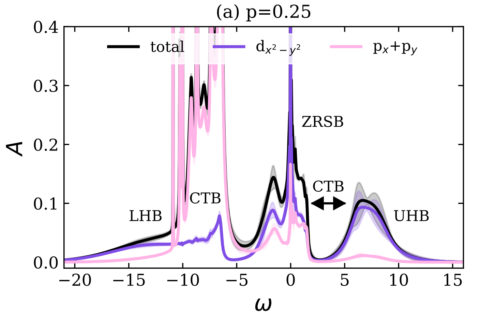New Preprint: Single- and two-particle observables in the Emery model: a dynamical mean-field perspective
We compare the dynamical mean-field descriptions of the single-band Hubbard model and the three-band Emery model at the one- and two-particle level for parameters relevant to high-Tc superconductors. We show that even within dynamical mean-field theory, accounting solely for temporal fluctuations, the intrinsic multi-orbital nature of the Emery model introduces effective non-local correlations. These lead to a non-Curie-like temperature-dependence of the magnetic susceptibility, also seen in nuclear magnetic resonance experiments in the pseudogap regime by M. Avramovska, et al. [Journal of Superconductivity and Novel Magnetism 33, 2621 (2020)]. We demonstrate the agreement of our results with these experiments for a large range of dopings and trace back the effective non-local correlations to an emerging oxygen-copper singlet by analyzing a minimal finite-size cluster model. Despite this correct description of the hallmark of the pseudogap at the two-particle level, i.e., the drop in the Knight shift of nuclear magnetic resonance, dynamical mean-field theory fails to properly describe the spectral properties of the pseudogap.

